EXPERT INSIGHT
3D Printing in Medicine Course: The Lectures You Should Not Miss

Behind each groundbreaking technology is an active network of pioneers advancing innovation, and 3D printing in medicine is no exception. As this technology becomes increasingly popular and a growing number of hospitals deploy point-of-care 3D printing facilities, being part of the leading professional network and having access to the latest knowledge sharing is essential. Following a successful first edition in the United States, Materialise hosted a 3D Printing in Medicine Course in Europe in June 2018 to empower the network during an inspirational two-day event.
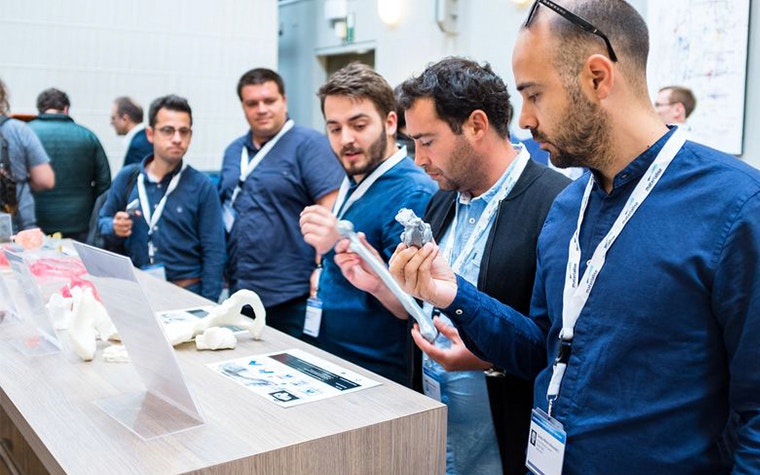

Proven tips on how to implement 3D planning and 3D printing in hospitals
Dr. Philipp Brantner (University Hospital of Basel, Clinic of Radiology and Nuclear Medicine, Switzerland) outlined the stages required to successfully deploy a 3D lab in your hospital, starting from finding the relevant partner to proceeding with an interdisciplinary setup. According to Dr. Brantner, the workflow steps from image acquisition to 3D-printed anatomical model should be clearly defined and include, amongst others, the KPI, validation procedures, and monitoring. Additionally, the choice of a suitable 3D printer and funding strategy play a key role in setting up a successful 3D Lab.
Prof. Dr. Bilal Al-Nawas (Plastic Surgery University Medical Center of the Johannes Gutenberg University Mainz, Germany) aims to adequately answer the question ‘How can we introduce 3D planning and 3D printing in our daily lives?’ In order to find the answer, he zoomed in on every single step of the workflow to point out all relevant considerations and pitfalls.
Is it worth investing in setting up a 3D lab at your hospital? Is the 3D medical software you would implement to segment and create a 3D model CE-marked? What about sterilizing the 3D-printed parts you’ll need in the OR? Additionally, Prof. Dr. Bilal Al-Nawas pointed out the importance of combining soft tissue data, such as the perforator vessel location, with CT images. Moreover, he used hands-on cases of performed cases involving slow-growing tumors. Finally, Prof. Dr. Bilal Al-Nawas highlighted the benefits of in-house point-of-care 3D printing when dealing with malignant tumor cases.
“These were the first cases where we saw how the precision of the surgery changed. Things get just more precise, and the operation time gets shorter.”
— Prof. Dr. Bilal Al-Nawas
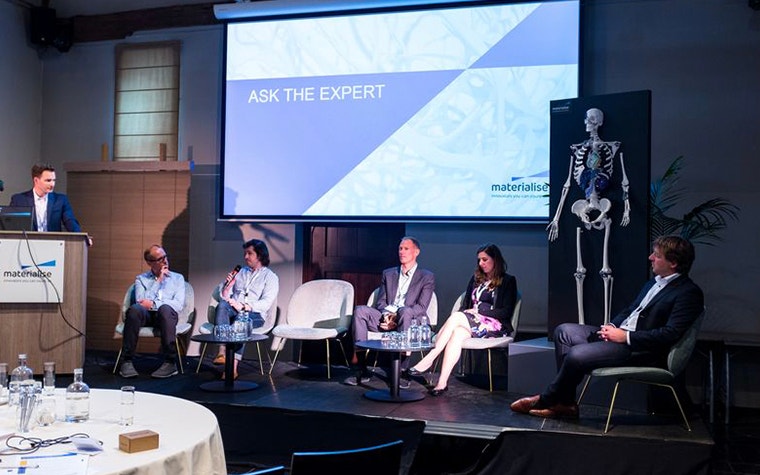

The critical role of 3D planning and 3D printing in orthopaedics and CMF
This topic was presented by several expert speakers, showing how implementing 3D technology enabled 3D preoperative planning, which, in turn, contributed to more predictive patient outcomes in complex cases.
To demonstrate the added value of 3D-printed anatomical models when dealing with CMF reconstruction cases, Joep Kraeima (The University Medical Center Groningen, The Netherlands) shared the steps required to go from medical scan to surgical planning while evaluating the different treatment approaches. Next, Mr. Kraeima added a detailed workflow of a mandibular reconstruction using a patient’s fibula following the resection of a tumor.
His lecture also shows how to combine MRI and CT scans in different steps of a workflow that is already being successfully applied on a daily basis in their 3D lab framework. Moreover, Mr. Kraema’s approach can be of great inspiration, as it can actually be applied in various medical areas.
“This workflow makes the patient’s outcome very predictable. You are almost always certain that you’ll get the tumor out of the bone entirely.”
— Mr. Joep Kraeima
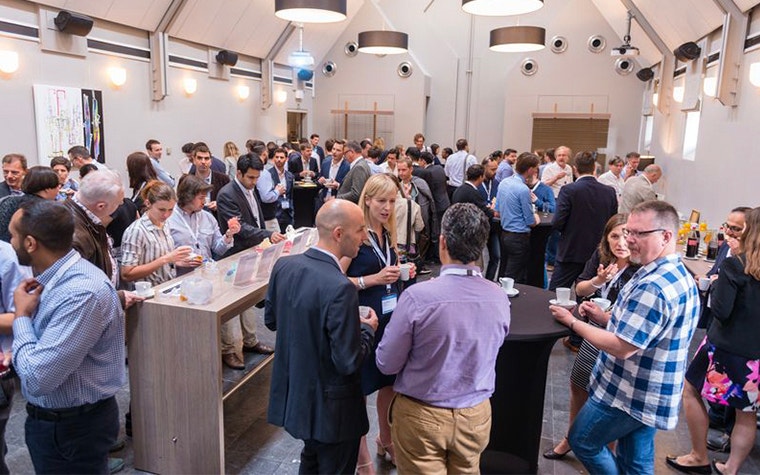

The critical role of 3D planning and 3D printing in the cardiovascular field
Prof. Dr. Mario Carminati (IRCCS Policlinico San Donato, Milan, Italy) and Dr. Adam Kolesnik (Children's Memorial Health Institute, Warsaw, Poland) shared clinical examples of how medical 3D modeling can advance the treatment of complex congenital heart disease and structural heart defects, and how this technology can enable a patient-specific approach.
“The advantage of 3D printing models is all about teaching, the exploration of valve vessel function, the morphologic analysis of congenital heart defects, the preoperative planning of complex cases, and so much more.”
— Dr. Prof. Mario Carminati
The critical role of 3D planning and 3D printing in urology
The benefits of 3D printing applied in urology were presented by keynote speaker Mr. Pankaj Chandak (Great Ormond Street and Guy's and St Thomas' NHS Foundation Trust, United Kingdom), who successfully performed an adult kidney transplant into a toddler’s body with the help of a 3D-printed anatomy model.
Mrs. Nicole Wake demonstrated in her presentation how medical 3D printing can enhance surgical planning while improving patient communication for preoperative planning in kidney and prostate cancer cases. She illustrated her examples with several studies in which she has been actively involved.
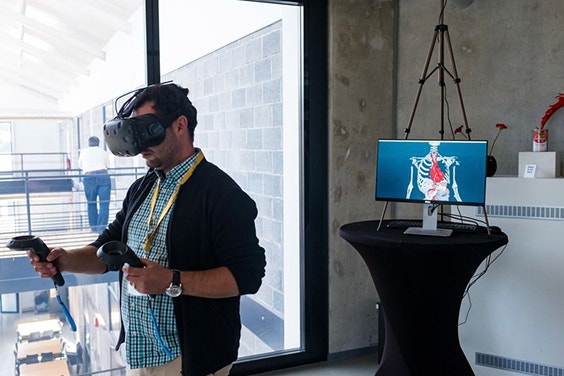

Hack: find the latest updates in medical 3D printing
The secret hack for keeping up with innovation is to be part of the innovation. This means staying informed and getting first-hand updates from pioneers and leading experts in the field of 3D Printing in Medicine. Sign up for our newsletter today to receive the latest information on upcoming events, new blog posts, and other useful updates that can enable you to advance your 3D anatomical modeling projects.
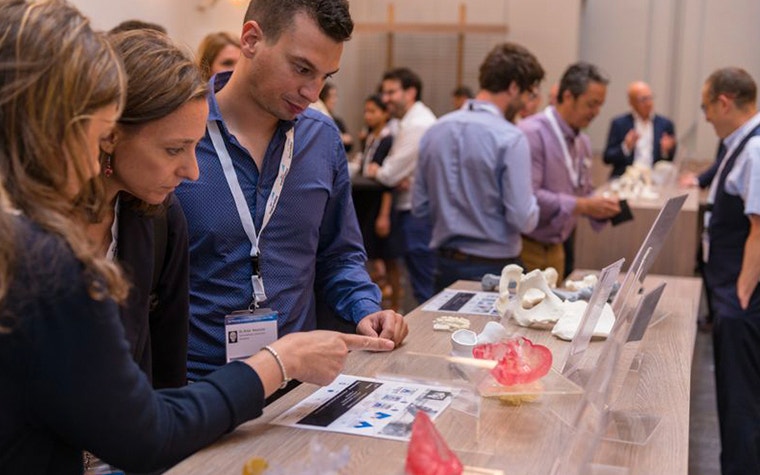

Disclaimer: In these mentioned cases, Materialise was the provider of the medical software [Materialise Mimics Innovation Suite, Mimics inPrint and ProPlan CMF], the 3D planning and 3D-printed patient-specific surgical guides and implants.
Share on:
You might also like
Never miss a story like this. Get curated content delivered straight to your inbox.
